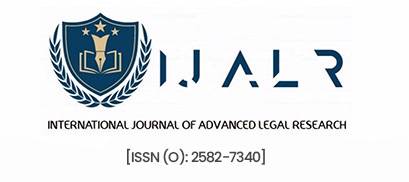ABSTRACT
This paper provides a comprehensive analysis of the Doctrine of Ultra Vires as outlined in the Companies Act of 2013. It explains the historical context, the necessity, the extent of power, and the overall scope of the doctrine. Furthermore, it delves into the evolutionary path of this doctrine in both the United Kingdom and India, highlighting various measures adopted by business entities to evade its implications. The study also sheds light on exceptions to the doctrine and the consequences of ultra vires transactions.
INTRODUCTION
The word ultra vires was derived from two Latin terms: “ultra,” which means beyond, and “vires,” meaning power or authority. Therefore, the meaning of the term ultra vires is ‘beyond the power or authority of’. In simple words, when a company carries out an act that isn’t mentioned in its object clause, it exceeds its legal powers. Such acts are known as an ultra vires act and the company isn’t legally permitted to undertake it.
The doctrine applies to all incorporated entities that have a separate legal identity. In contrast, it does not extend to partnership firms or sole proprietorships. A company is formed only to pursue the objectives outlined in its memorandum of association’s object clause. The shareholders cannot ratify any act that is ultra vires in nature. No one can ratify any act that goes against the object clause.
HISTORY
In 1612, the concept of doctrine of ultra vires was first established in United Kingdom. This principle allows individuals to determine the legitimacy of an action. Over time, judges played a crucial role in interpreting and applying the doctrine through various legal cases. In the Sutton Hospital case[1], it was highlighted that the ultra vires doctrine does not extend to actions or transactions involving chartered accountants, despite their status as corporate entities with a distinct legal identity.
In the early 17th century, companies utilised “royal charters” for incorporation, granting them a separate legal identity from their owners. These charters grant corporation rights akin to those held by individuals, including the legal capacity to initiate or face lawsuits even in the absence of a physical form.
During 19th century, as the industrial revolution progressed, the role and scope of corporations expanded. The doctrine evolved to encompass not only acts beyond the company’s express powers, but also acts that were impliedly or incidentally ultra vires. As the role and structure of corporations evolved, so did the ultra vires doctrine. It expanded to cover not only acts beyond express power, but also implied or incidental acts. In the 20th century, statutory reforms and modern corporate legislation further shaped the application of the doctrine.
[1] (1612) 77 Eng Rep 960.

